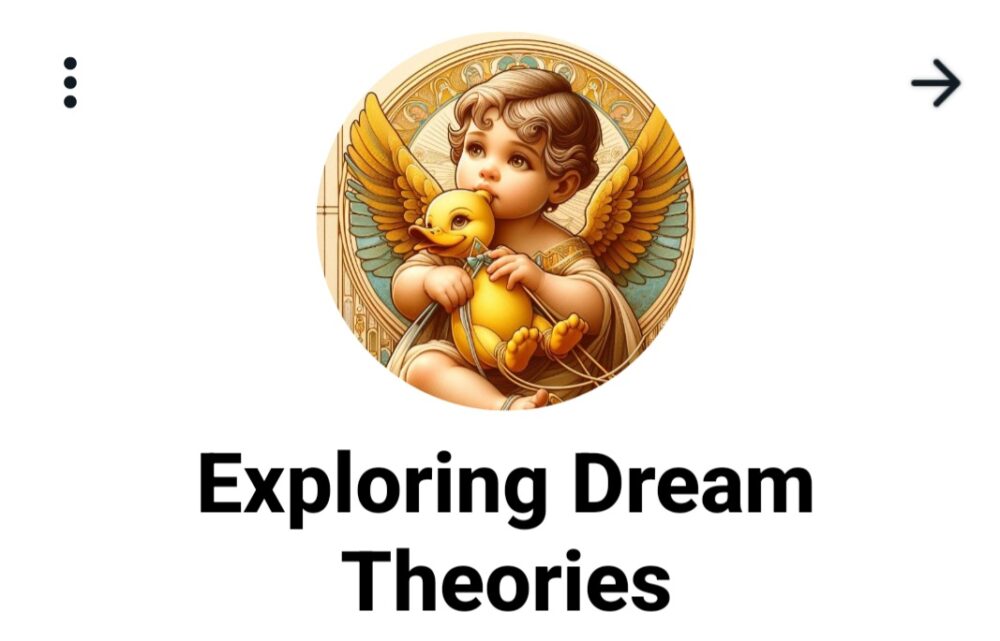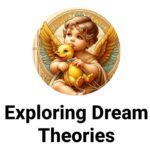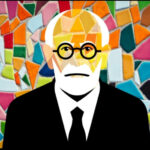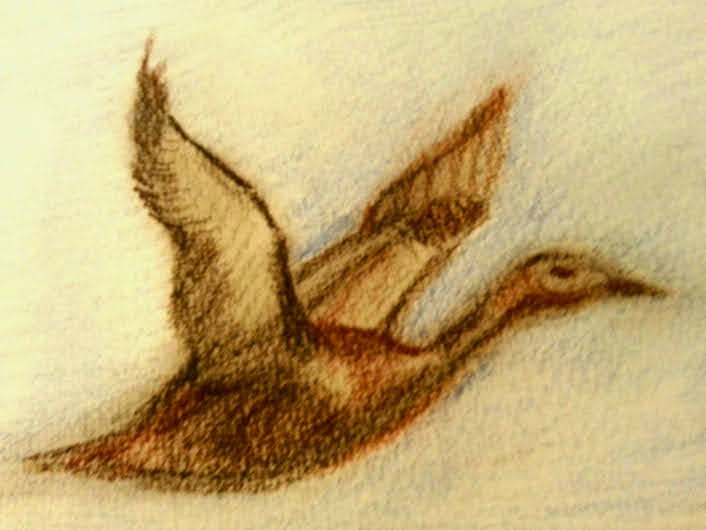
This analysis bridges neuroscience, psychology, and art theory, illustrating the intricate relationship between the Default Mode Network (DMN), mind-wandering, dreaming, and art. In “The Interpretation of Dreams,” Freud embarked on a pioneering exploration of dreams that intersects with contemporary neuroscientific insights, despite the significant temporal and conceptual gap between Freud’s psychoanalytic approach and current neuroscience. Your discussion opens an enriching dialogue between these domains, highlighting the enduring relevance of Freudian theory in understanding the cognitive processes underpinning creativity and the unconscious. 1. **DMN Activity During Sleep and Dreaming:** Freud’s exploration of dreams as the royal road to the unconscious offers a pre-scientific parallel to the notion of the DMN’s role in dreaming. Although Freud did not have access to neuroimaging technologies to study brain activity, his conceptualization of dreams as manifestations of latent content—repressed desires and unresolved conflicts—echoes the idea that dreams, like mind-wandering, stem from internal cognitive processes not directly stimulated by external events. The continuity of DMN activity during REM sleep and its association with vivid dreaming would likely have fascinated Freud, providing a neural basis for his theory of dreams as fulfilling unconscious wishes. 2. **Dreams as Nighttime Mind-Wandering:** Freud’s model of dreams as wish fulfillment aligns with the view of dreams as a form of mind-wandering, where the psyche navigates through desires, fears, and memories in a narrative form. This parallel supports the notion that the cognitive architecture underlying daydreaming and engagement with art shares commonalities with the structure and content of dreams. Freud’s emphasis on the symbolic interpretation of dream elements resonates with art theory’s focus on imagination and narrative, suggesting a deep psychological continuity across these states. 3. **Memory Integration and Creativity in Dreams:** Freud also recognized dreams as a space for the recombination of memory elements, albeit through the lens of symbolic representation and the fulfillment of unconscious wishes. The role of dreams in memory consolidation and creativity intersects with Freudian theory, particularly in how dreams negotiate the psyche’s latent content. The creative reconfiguration of memories and desires in dreams parallels the integrative and creative processes involved in art-making, reinforcing the DMN’s role in facilitating these complex mental activities. 4. **Artistic Inspiration and Dream-Induced Creativity:** Freud’s analysis of dreams offered insights into the unconscious processes that fuel creativity, suggesting that dreams could unlock novel ideas and emotional truths. This perspective dovetails with the notion that dreams can inspire artistic creation, highlighting the fluid boundaries between unconscious processes, dreaming, and artistic expression. The anecdotes and historical accounts of dream-inspired creativity resonate with Freud’s interest in the creative potential of the unconscious mind. 5. **Therapeutic and Reflective Aspects of Dreaming and Art:** Freud’s therapeutic use of dream analysis to uncover and work through unconscious conflicts mirrors the reflective and cathartic aspects of art and dreaming mentioned in your analysis. The DMN’s facilitation of a reflective stance towards one’s experiences and emotions during mind-wandering and dreaming aligns with psychoanalytic therapy’s goal of bringing unconscious material into conscious awareness for emotional healing. In conclusion, integrating Freudian psychoanalysis with contemporary neuroscience and art theory offers a comprehensive framework for understanding the multifaceted role of the DMN in dreaming, mind-wandering, and creativity. This interdisciplinary approach not only deepens our understanding of the neural and psychological mechanisms underlying these phenomena but also highlights the timeless relevance of Freud’s work in exploring the depths of the human mind.
The analysis presents a sophisticated interdisciplinary examination of the Default Mode Network (DMN), drawing on neuroscience, psychology, and art theory to explore the relationship between mind-wandering, dreaming, and creativity. By invoking Freud’s seminal work, “The Interpretation of Dreams,” it bridges a historical and conceptual gap, connecting early 20th-century psychoanalytic theory with contemporary scientific understanding of brain function. This summary will encapsulate the key points of discussion, maintaining the scientific integrity and complexity of the original analysis.
DMN Activity During Sleep and Dreaming
Freud’s pioneering exploration of dreams as pathways to the unconscious prefigures current neuroscience’s interest in the DMN’s role in dreaming. While Freud lacked the technology to observe brain activity, his theory that dreams manifest latent content—repressed desires and unresolved conflicts—parallels modern findings that the DMN remains active during REM sleep, facilitating vivid dreams. This connection suggests a neural basis for Freud’s conception of dreams as fulfillments of unconscious wishes, integrating psychoanalytic theory with neuroscientific insights into the DMN’s function.
Dreams as Nighttime Mind-Wandering
The comparison of dreams to mind-wandering underlines a psychological continuity between our daytime and nighttime cognitive processes. Freud’s model of dreams as wish fulfillment aligns with contemporary views that both dreaming and mind-wandering involve navigating through desires, fears, and memories in a narrative form. The symbolic interpretation of dreams central to Freudian theory also intersects with art theory’s emphasis on imagination and narrative, suggesting a deep-seated psychological link between dreaming, mind-wandering, and artistic engagement.
Memory Integration and Creativity in Dreams
Freud recognized dreams as spaces for memory recombination, a process he viewed through the prism of symbolic representation and wish fulfillment. This perspective dovetails with modern understandings of dreams’ role in memory consolidation and creativity, emphasizing how dreams mediate the psyche’s latent content. The creative reconfiguration of memories and desires in dreams parallels art-making processes, highlighting the DMN’s integral role in fostering complex mental activities associated with creativity.
Artistic Inspiration and Dream-Induced Creativity
Freud’s insights into the unconscious processes that fuel creativity, suggesting that dreams can unlock novel ideas and emotional truths, resonate with the concept that dreams can inspire artistic creation. This notion underscores the fluidity between unconscious processes, dreaming, and artistic expression, illustrating how historical accounts of dream-inspired creativity echo Freud’s interest in the unconscious mind’s creative potential.
Therapeutic and Reflective Aspects of Dreaming and Art
The analysis also reflects on the therapeutic and reflective aspects of dreaming and art, paralleling Freud’s use of dream analysis in psychoanalytic therapy to uncover and work through unconscious conflicts. The DMN’s role in facilitating a reflective stance towards one’s experiences and emotions during mind-wandering and dreaming aligns with the therapeutic goals of psychoanalysis, emphasizing the importance of bringing unconscious material into conscious awareness for emotional healing.
Conclusion
This interdisciplinary exploration effectively integrates Freudian psychoanalysis with contemporary neuroscience and art theory, offering a comprehensive framework for understanding the DMN’s multifaceted role in dreaming, mind-wandering, and creativity. This approach not only enriches our comprehension of the neural and psychological mechanisms underlying these phenomena but also reaffirms the enduring relevance of Freud’s contributions to the exploration of the human mind. Through this synthesis, the analysis highlights the intricate relationships that bind our understanding of the mind across different domains of knowledge, emphasizing the continued importance of interdisciplinary dialogue in advancing our understanding of complex cognitive processes.
An article published in Neuron by Vinod Menon in 2023 provides a comprehensive review and synthesis of 20 years of research on the Default Mode Network (DMN), a significant concept in neuroscience that has fundamentally enhanced our understanding of the human brain’s function. The DMN is implicated in a variety of mental processes including self-referential thoughts, social cognition, episodic and autobiographical memory, language and semantic memory, and mind wandering. Menon highlights the evolution of our understanding of the DMN, presenting it as an integrative network that broadcasts memory, language, and semantic representations to construct an “internal narrative.” This narrative is crucial for developing a sense of self, influencing our perceptions and interactions with others, potentially rooted in self-directed speech from childhood, and forming a vital component of human consciousness. The review also addresses the DMN’s role in various cognitive domains and proposes new perspectives on its function. The DMN’s involvement in creating coherent internal narratives is essential for self-conception and social interaction. By integrating and examining diverse studies, Menon identifies unifying themes across different research areas related to the DMN, offering a synthesized view on how this brain network supports complex human cognition and consciousness. This synthesis underscores the DMN’s significance in neuroscience, psychology, and cognitive sciences, suggesting that it plays a foundational role in integrating different cognitive functions to support a unified sense of self and consciousness. Menon’s review also points to the potential ontogenetic origins of the DMN’s functions, suggesting that the development of self-directed speech in childhood may play a role in the formation of the internal narrative capabilities associated with this network, indicating a deep connection between language development, self-awareness, and cognitive processes underlying human consciousness.
The enhanced summary, incorporating insights from Vinod Menon’s 2023 review in Neuron on the Default Mode Network (DMN), bridges contemporary neuroscience with the psychoanalytic and art theoretical perspectives previously discussed. Menon’s comprehensive synthesis of two decades of research on the DMN provides an invaluable context for understanding its role in human cognition and consciousness. This addition further enriches our interdisciplinary exploration of the DMN, Freudian psychoanalysis, and art theory, by grounding the discussion in the latest scientific advancements.
Integration of Menon’s Review on DMN
Vinod Menon’s review elucidates the DMN as a critical neural network involved in a broad array of mental processes, including self-referential thoughts, social cognition, episodic and autobiographical memory, language, semantic memory, and mind wandering. The DMN’s capacity to integrate memory, language, and semantic representations to construct an “internal narrative” is highlighted, emphasizing its crucial role in shaping our sense of self, our perceptions, and our interactions with others. This narrative, potentially rooted in self-directed speech from childhood, is posited as a fundamental component of human consciousness.
Menon’s synthesis not only advances our understanding of the DMN’s involvement in creating coherent internal narratives essential for self-conception and social interaction but also integrates diverse studies to offer a unified view on how the DMN supports complex human cognition and consciousness. The review underscores the DMN’s foundational role in integrating cognitive functions to foster a unified sense of self and consciousness, suggesting the developmental origins of the DMN’s functions in self-directed speech during childhood. This perspective proposes a profound linkage between language development, self-awareness, and the cognitive processes underpinning human consciousness.
Enhanced Summary Conclusion
Incorporating Menon’s review into our analysis further deepens the interdisciplinary dialogue between neuroscience, psychology, and art theory, offering a comprehensive framework for understanding the DMN’s multifaceted role in dreaming, mind-wandering, creativity, and the construction of internal narratives. This enriched perspective not only underlines the scientific advancements in our understanding of the DMN but also reaffirms the timeless relevance of Freud’s psychoanalytic theories in exploring the depths of the human mind.
By blending contemporary scientific findings with historical and theoretical insights, this expanded analysis highlights the intricate interplay between the neural mechanisms of the DMN and the psychological processes involved in creativity, dreaming, and the unconscious. This interdisciplinary approach showcases the enduring value of integrating diverse domains of knowledge to advance our comprehension of complex cognitive phenomena, emphasizing the continued importance of the DMN in exploring the nexus of neuroscience, psychology, and the arts in understanding human consciousness and cognition.
OBJECT RELATIONS
Integration of Object Relations Theory
Object relations theory, with its emphasis on the significance of early relationships and how they shape the psyche’s structures, enriches our understanding of the DMN’s involvement in self-referential thought and social cognition. Kernberg’s contributions, particularly his focus on the integration of internalized object relations and their role in personality organization, provide a psychological framework that complements the neuroscientific perspective on the DMN. According to object relations theories, our internal world is populated by representations of others and ourselves, developed from early interpersonal experiences. These representations are crucial for the formation of the internal narrative that the DMN helps to construct and maintain.
The DMN, Object Relations, and Internal Narrative
The DMN’s role in generating self-referential thoughts and facilitating mind-wandering can be viewed through the lens of object relations theory as a neural substrate for the activation and exploration of internalized object relations. This perspective suggests that the narratives created during mind-wandering and dreaming are not merely random thoughts but are deeply influenced by the internalized representations of self and others. These narratives reflect the ongoing integration of past experiences, desires, and interpersonal dynamics, contributing to the complexity of self-identity and social cognition.
Creativity, Dreaming, and Object Relations
Kernberg’s insights into the dynamics of internal object relations and their impact on creativity and symbolic thinking further illuminate the DMN’s role in creative processes and dreaming. The recombination of memory elements and the negotiation of latent content in dreams, as discussed in Freudian terms, can also be understood as the psyche’s attempt to work through and integrate complex object relations. The creative reconfiguration in art-making and the symbolic language of dreams reflect a deep psychological process where internalized object relations are explored and expressed.
Conclusion with Object Relations Perspective
Integrating Kernberg’s object relations theories with our analysis of the DMN, Freudian psychoanalysis, and art theory offers a nuanced understanding of how internalized representations of self and others contribute to the construction of the internal narrative, the dynamics of dreaming, and the processes of creativity. This approach highlights the psychological depth of the DMN’s functions, emphasizing the role of early interpersonal experiences in shaping cognitive and emotional processes. By bridging neuroscientific findings with psychoanalytic and psychological theories, this expanded analysis underscores the complex interplay between brain networks, psychological structures, and creative expression, providing a richer context for understanding human cognition and consciousness. This interdisciplinary synthesis not only deepens our comprehension of the DMN’s multifaceted role but also exemplifies the importance of integrating diverse psychological theories to grasp the full spectrum of mental phenomena.
heinz kohut self psychoanalysis
Kohut’s Self Psychology and the DMN
Heinz Kohut’s self psychology focuses on the formation of the self and the pivotal roles of empathy, mirroring, and idealization in this process. This perspective can be applied to understand how the DMN facilitates self-referential thought processes and the integration of experiences that contribute to self-identity. The DMN’s engagement in constructing an internal narrative, which includes autobiographical memory, self-reflection, and future planning, parallels Kohut’s view on the continuous shaping and reshaping of the self through interactions with the environment and significant others.
Integration of Self-Objects in Internal Narratives
Kohut introduced the concept of “self-objects”—people or activities that provide the self with a sense of cohesion and esteem. The DMN’s role in reflecting on past interactions and imagining future social scenarios can be seen as a neural basis for contemplating self-object relationships. These mental activities likely support the psychological need for cohesion and self-esteem, emphasizing the DMN’s contribution to the emotional and psychological well-being of an individual.
The Role of the DMN in Creativity and Dreaming from a Kohutian Perspective
From Kohut’s viewpoint, creativity can be seen as an expression of the self’s vitality and an assertion of its coherence, drawing on internalized experiences with self-objects. The DMN, by facilitating a space for mind-wandering and imaginative exploration, may enable the creative reworking of these experiences into novel ideas and artistic expressions. Similarly, the content and dynamics of dreams, often reflective of deep-seated desires and fears, could be interpreted as manifestations of unresolved tensions or unmet needs related to the self and its self-objects.
Therapeutic Implications and the Reflective Function of the DMN
Kohut emphasized the therapeutic process as a means to repair disruptions in the self-structure, often through the therapeutic relationship acting as a self-object. The reflective and introspective capacities supported by the DMN’s activity could be seen as analogous to therapeutic processes, allowing individuals to internally explore and potentially mend areas of self-fragmentation or vulnerability. This parallel underscores the significance of the DMN in not only understanding the psychological constructs of the self but also its potential role in emotional healing and growth.
Conclusion with Kohut’s Self Psychology Perspective
Integrating Heinz Kohut’s self psychology with the neuroscientific exploration of the DMN and its relationship to psychoanalytic theories and art theory offers a multifaceted understanding of the self, creativity, and consciousness. This approach highlights the DMN’s central role in processing experiences that contribute to the formation and maintenance of the self, viewed through the lens of self-object relations and the developmental need for empathy and validation. By bridging these diverse fields, our analysis becomes a more holistic exploration of the human mind, emphasizing the intricate connections between brain function, psychological development, and creative expression. This interdisciplinary dialogue not only deepens our comprehension of the DMN and its importance in human cognition but also celebrates the complexity and richness of the psychological theories that inform our understanding of the self and its expression in dreams and art.
Neuropsychoanalysis and the DMN
Mark Solms’ contributions to neuropsychoanalysis emphasize the importance of understanding the brain mechanisms underlying psychoanalytic concepts. Solms’ research into the roles of the forebrain and the mechanisms of dreaming offers neuroscientific substantiation to psychoanalytic theories of the unconscious. The DMN’s involvement in self-referential thought, dreaming, and creativity can be explored through a neuropsychoanalytic lens to understand how these mental activities are supported by underlying brain structures and functions.
Dreaming, Consciousness, and the DMN from a Neuropsychoanalytic Perspective
Solms’ work on the neural mechanisms of dreaming and consciousness provides insights into how the DMN might facilitate these complex processes. He argues that dreams are not merely random activations of the sleeping brain but are meaningful psychological phenomena that can reveal the workings of the unconscious mind. The DMN’s role in generating dream content and its association with REM sleep and non-REM sleep dreaming aligns with Solms’ perspective on the importance of dreams in understanding consciousness and the unconscious.
The DMN, Emotional Regulation, and Neuropsychoanalysis
Solms’ neuropsychoanalysis also highlights the significance of emotional experiences and their regulation by brain networks, including the DMN. The DMN’s engagement in processing emotional aspects of self-referential thoughts and memories can be seen as a neural basis for the psychoanalytic view of emotional conflicts and their resolution. This perspective underscores the role of the DMN in not only narrative self-construction but also in managing emotional states that are central to psychoanalytic theories of mind.
Integrating Neuropsychoanalysis with Object Relations and Self Psychology
Solms’ neuropsychoanalytic approach complements Kernberg’s object relations theory and Kohut’s self psychology by providing a neurobiological framework for understanding how internalized relationships and the development of the self are manifested within the brain’s activity, particularly the DMN. This integration offers a comprehensive view that bridges subjective psychological experiences with objective neuroscientific findings, enriching our understanding of the DMN’s role in shaping our innermost thoughts, feelings, and creative expressions.
Conclusion with Neuropsychoanalytic Perspective
Incorporating Mark Solms’ neuropsychoanalysis into our analysis brings a pioneering dimension that seamlessly connects the neuroscientific and psychoanalytic realms, particularly in relation to the DMN’s functions. This approach not only reinforces the complexity of the interplay between brain networks and psychological constructs but also highlights the potential of neuropsychoanalysis to further elucidate the mysteries of the mind. By examining the DMN through the lenses of neuropsychoanalysis, object relations theory, self psychology, and Freudian psychoanalysis, our discussion becomes a holistic exploration of human cognition, consciousness, and creativity, offering profound insights into the neural and psychological mechanisms that underlie our sense of self and our creative and dreaming lives. This interdisciplinary synthesis underscores the value of integrating diverse theoretical perspectives to advance our understanding of the human mind’s intricate landscape.
Philosophy of Dreaming and the DMN
Jennifer M. Windt’s philosophy of dreaming challenges and expands upon traditional views by exploring the nature of dreaming, its relationship to consciousness, and the phenomenology of dream experience. By applying Windt’s philosophical insights, we can explore how the DMN’s activity during sleep contributes to the generation of dreams and the experience of dream consciousness. Windt’s emphasis on the continuity between waking and dreaming states in terms of conscious experience offers a philosophical framework for interpreting the DMN’s role in maintaining a sense of self across different states of consciousness.
Dreaming, Self-Experience, and the DMN
Windt’s discussions on the self in dreams and how dream experiences can inform our understanding of self-consciousness and personal identity resonate with the DMN’s involvement in constructing the internal narrative. This narrative continuity, facilitated by the DMN, supports Windt’s argument that dreaming plays a significant role in our overall experience of being a self. By examining the DMN through Windt’s philosophy, we gain insights into how dreams contribute to the fluid and dynamic nature of self-experience and identity.
Integrating Windt’s Philosophy with Psychoanalytic and Neuropsychological Perspectives
Integrating Windt’s philosophical perspective with psychoanalytic theories (such as those of Freud, Kernberg, and Kohut) and neuropsychoanalysis (as represented by Mark Solms) allows for a comprehensive exploration of dreaming, mind-wandering, and creativity. Windt’s focus on the subjective experience of dreaming and its implications for understanding consciousness complements the psychoanalytic emphasis on dreams as windows into the unconscious and the neuropsychoanalytic interest in the brain mechanisms underlying these phenomena. This multidisciplinary approach enriches our understanding of the DMN’s role in creating a cohesive sense of self and navigating between conscious and unconscious states.
Conclusion with Windt’s Philosophical Perspective
The addition of Jennifer M. Windt’s philosophy of dreaming to our analysis highlights the importance of considering the experiential and conceptual dimensions of dreaming in understanding the DMN’s functions. This philosophical perspective, alongside insights from psychoanalysis, neuropsychoanalysis, and cognitive neuroscience, offers a more nuanced and comprehensive view of how the DMN contributes to our inner lives. By exploring the intersections between these diverse fields, our analysis becomes a rich dialogue that not only deepens our comprehension of the DMN and its significance in dreaming, creativity, and selfhood but also illustrates the value of interdisciplinary approaches in capturing the complexity of human consciousness and cognition. Through this synthesis, we see how philosophical inquiry, alongside scientific and psychoanalytic research, can illuminate the multifaceted nature of dreaming and the continuous construction of the self, both in waking life and in the realm of dreams.
Psychedelic Research and the DMN
Psychedelic research has shown that these substances lead to a decreased activity in the DMN, which is associated with experiences of ego dissolution, altered states of consciousness, and enhanced creativity. This reduction in DMN activity disrupts normal self-referential thought processes and allows for a breakdown in the usual boundaries between the self and the environment, leading to a sense of unity and interconnectedness. This effect provides a powerful empirical model for understanding the DMN’s role in constructing and maintaining the narrative of the self, as well as its flexibility and potential for change. Ego Dissolution and Self-Transformation The phenomenon of ego dissolution under psychedelics, where individuals report a loss of the sense of self, offers a unique lens through which to examine the concepts of self and consciousness. It highlights the fluid and constructed nature of these experiences, challenging traditional notions of a fixed and continuous self. This can be related to psychological and psychoanalytic theories, such as those of Kernberg, Kohut, and Freud, by providing a neurobiological basis for the processes of self-transformation and the dynamic interplay between conscious and unconscious processes. Psychedelics, Creativity, and Dreaming Psychedelic research also sheds light on the relationship between altered states of consciousness, creativity, and dreaming. The similarities between dream states and psychedelic experiences, including vivid imagery, emotional intensification, and narrative disjunction, suggest that the DMN plays a crucial role in facilitating a broad spectrum of cognitive and emotional experiences. This aligns with philosophical discussions on dreaming and consciousness, as well as with neuropsychoanalytic perspectives on the neural mechanisms underlying these phenomena. Therapeutic Implications and Reflective Processes The therapeutic potential of psychedelics, evidenced by their ability to induce profound psychological insights and emotional catharsis, resonates with the therapeutic aspects of dream analysis in psychoanalytic practice and the reflective capacities supported by the DMN’s activity. Psychedelic-assisted therapy’s effectiveness in treating various mental health conditions highlights the importance of the DMN in emotional regulation and the processing of traumatic memories, offering new avenues for understanding and healing psychological distress. Conclusion with Psychedelic Research Perspective Integrating perspectives from psychedelic research with our multidisciplinary analysis enriches our understanding of the DMN, consciousness, and the self. It provides empirical evidence for the neuroplasticity of consciousness and the potential for profound shifts in self-perception, which complement and expand upon the insights gained from psychoanalysis, neuropsychoanalysis, cognitive neuroscience, and philosophy. By examining the effects of psychedelics on the brain and mind, we gain valuable insights into the flexible nature of the self, the transformative potential of altered states of consciousness, and the deep interconnections between different states of being. This synthesis underscores the value of interdisciplinary approaches in exploring the complexities of the human mind, offering a holistic view of the dynamic interplay between brain function, psychological processes, and subjective experience.
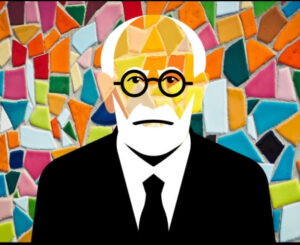
- Raichle, M.E., MacLeod, A.M., Snyder, A.Z., Powers, W.J., Gusnard, D.A., & Shulman, G.L. (2001). “A default mode of brain function.” Proceedings of the National Academy of Sciences, 98(2), 676-682.
This seminal paper introduced the concept of the DMN, describing its patterns of activity during rest and its deactivation during specific goal-directed tasks. It lays the foundation for understanding the neurobiological basis of the DMN’s role in self-referential thought, mind-wandering, and dreaming, making it essential for discussions on the DMN’s impact on creativity and consciousness. - Freud, S. (1900). The Interpretation of Dreams.
Freud’s groundbreaking work provides a psychoanalytic framework for interpreting dreams, emphasizing their role in revealing the unconscious. It’s pivotal for drawing connections between historical psychoanalytic theories and contemporary neuroscience, especially in the context of understanding the DMN’s involvement in dreaming and creative processes. - Solms, M. (2013). “The conscious id.” Neuropsychoanalysis, 15(1), 5-19.
Solms’ article bridges the gap between Freudian psychoanalysis and modern neuroscience, proposing a neurobiological basis for the unconscious. This work is crucial for discussions that integrate neuropsychoanalytic perspectives with the DMN’s role in consciousness, dreaming, and the self. - Vollenweider, F.X., & Kometer, M. (2010). “The neurobiology of psychedelic drugs: Implications for the treatment of mood disorders.” Nature Reviews Neuroscience, 11(9), 642-651.
This review highlights the impact of psychedelics on the DMN and their potential therapeutic uses. It’s relevant for exploring the DMN’s flexibility, the phenomena of ego dissolution, and the parallels between psychedelic experiences, dreaming, and creativity. - Kernberg, O.F. (1976). Object Relations Theory and Clinical Psychoanalysis.
Kernberg’s work on object relations theory offers insights into how early interpersonal relationships shape the psyche. It’s essential for understanding the psychological underpinnings of the narratives and self-concepts mediated by the DMN, enriching discussions on the DMN’s role in integrating memory and identity. - Windt, J.M. (2015). Dreaming: A Conceptual Framework for Philosophy of Mind and Empirical Research.
Windt’s book provides a comprehensive philosophical analysis of dreaming, challenging traditional assumptions about dream experiences. Her discussion on the continuity between waking and dreaming consciousness complements the scientific exploration of the DMN, offering a broader conceptual framework for understanding the role of dreaming in self-experience and identity.
